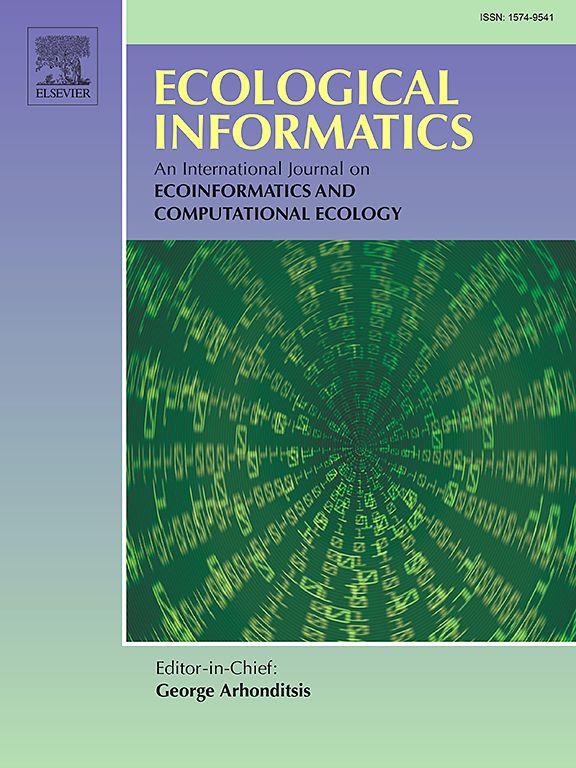石漠化地区土地退化中性的创新评价与驱动机制探索——以云桂黔为例
IF 5.8
2区 环境科学与生态学
Q1 ECOLOGY
引用次数: 0
摘要
石漠化(RD)是湿润半湿润地区土地退化的一种表现形式,在实现土地退化中性(LDN)的全球目标中起着关键作用。然而,《联合国防治荒漠化公约》对荒漠化的定义仅限于干旱和半干旱地区,这可能导致忽视喀斯特地区的荒漠化发生和恢复。为解决这一问题,本研究以云南、广西和贵州3个受荒漠化影响最严重的省份为研究对象,建立了专门的荒漠化地区LDN-RD评估框架,以监测荒漠化地区LDN的时空动态。此外,本文还采用梯度增强机和Shapley加性解释值,探讨了环境因素和人为因素对LDN目标实现的影响。总体而言,研究结果表明:(1)2001 - 2020年,中国云南、广西和贵州实现了低碳发展目标,其中贵州和广西表现尤为显著;(2)环境因素是退化地区实现低密度森林目标的关键决定因素,夜间光照、低温和缺水限制了退化地区低密度森林的实现;(3) RD指数的引入提高了识别区域土地退化现象的准确性。因此,我们建议在全球推广这一新的研发评估框架,以支持LDN倡议的实施。综上所述,充分利用和协调研发地区的环境因素对于加速实现最不发达地区目标至关重要。本文章由计算机程序翻译,如有差异,请以英文原文为准。

Exploring innovative assessment and driving mechanisms for achieving land degradation neutrality in rocky desertification areas: A case study of Yunnan–Guangxi–Guizhou, China
Rocky desertification (RD), a manifestation of land degradation in humid and semi-humid zones, plays a pivotal role in pursuing the global goal of land degradation neutrality (LDN). However, the definition of desertification as outlined by the United Nations Convention to Combat Desertification is confined to arid and semi-arid territories, which may lead to neglect of RD emergence and rehabilitation within karst regions. To address this, the current study focused on the three most severely RD-affected provinces in China (Yunnan, Guangxi, and Guizhou) and developed a specialized LDN-RD assessment framework for RD areas to monitor the spatiotemporal dynamics of LDN. Furthermore, by employing a gradient boosting machine and Shapley Additive exPlanations values, this study investigated the influence of environmental factors and human endeavors on achievement of the LDN goal. Overall, the research findings indicated that: (1) from 2001 to 2020, Yunnan, Guangxi, and Guizhou provinces in China achieved the LDN target, with particularly notable performances in Guizhou and Guangxi; (2) environmental factors were the key determinants in achieving the LDN goal in RD areas, with nighttime light, low temperature, and water scarcity limiting achievement of LDN in degraded regions, and; (3) the introduction of an RD index enhanced the accuracy of identifying regional land-degradation phenomena. Therefore, we recommend global promotion of this new assessment framework in RD to support implementation of the LDN initiative. In summary, the full utilization and coordination of environmental factors in RD areas are highly important for accelerating achievement of the LDN goal.
求助全文
通过发布文献求助,成功后即可免费获取论文全文。
去求助
来源期刊

Ecological Informatics
环境科学-生态学
CiteScore
8.30
自引率
11.80%
发文量
346
审稿时长
46 days
期刊介绍:
The journal Ecological Informatics is devoted to the publication of high quality, peer-reviewed articles on all aspects of computational ecology, data science and biogeography. The scope of the journal takes into account the data-intensive nature of ecology, the growing capacity of information technology to access, harness and leverage complex data as well as the critical need for informing sustainable management in view of global environmental and climate change.
The nature of the journal is interdisciplinary at the crossover between ecology and informatics. It focuses on novel concepts and techniques for image- and genome-based monitoring and interpretation, sensor- and multimedia-based data acquisition, internet-based data archiving and sharing, data assimilation, modelling and prediction of ecological data.
 求助内容:
求助内容: 应助结果提醒方式:
应助结果提醒方式:


